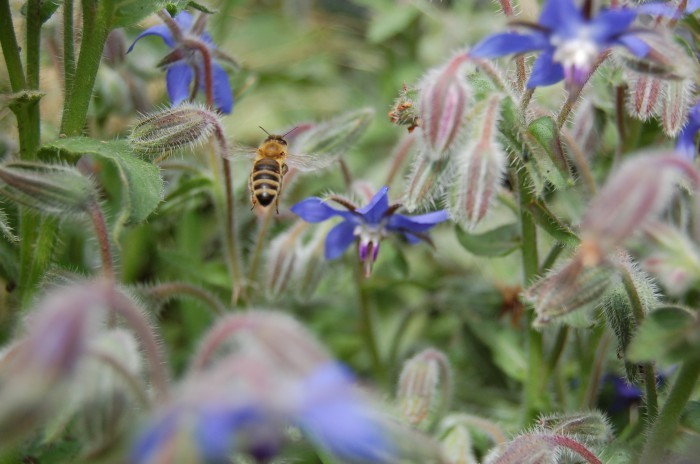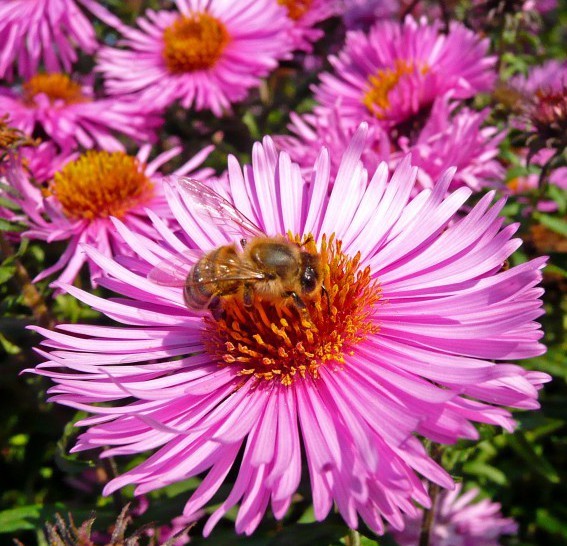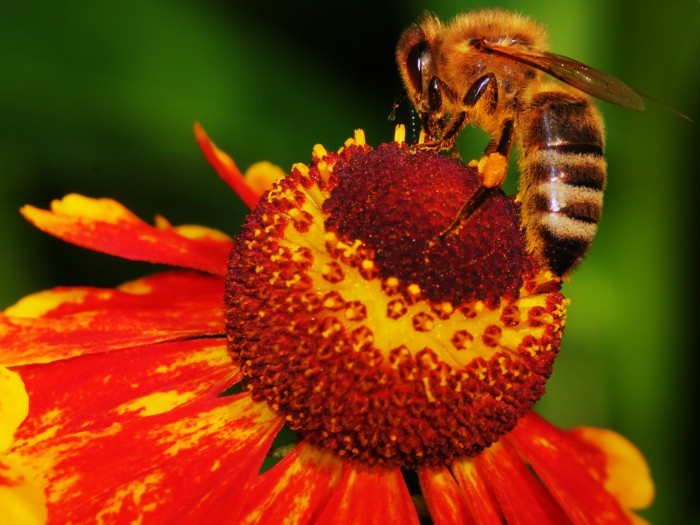In late summer and autumn, the garden can once again become really colorful. You just need to provide the right late bloomers. At the same time you give bees and bumblebees an important food source in difficult times.
Also due to the alarming news about the dying of bees, we have already dealt in the past from time to time with how you can also design your garden for bees, bumblebees and other insects. Towards autumn, this topic becomes important once again, because now the lean season begins for these important pollinators.

In spring and summer, bees and bumblebees find enough nectar and pollen. Fruit trees are in bloom, and canola and acacia provide enough forage. Most summer flowers in the garden are also approached by the insects. Bees and bumblebees particularly like herbs such as thyme, hyssop, savory, oregano, lavender and sage when they are allowed to bloom.
Bee pastures for autumn

But after the end of July, it becomes difficult for honey collectors. Summer annuals such as marigolds, nasturtiums, marigolds and zinnias are helpful then. Self-seeded herbaceous plants like borage also attract countless insects. (Did you know that each borage flower produces 1.3 mg of sugar in 24 h?) Beekeepers call such plantings “bee pasture.”
Instead of low-maintenance evergreen gardens, we advocate gardens full of flowers and blossoms with so-called bee-nourishing shrubs and willows (on which, of course, the bumblebees also cavort). Since there is enough food in spring and summer, we focus on the late summer and autumn period.
These plants bloom in autumn

Starting in August, buttercups (sedum) and snowberries bloom. Heather comes in snow and summer (don’t take the one with the double flowers), both are excellent bee pastures, easy to care for and bloom at the right time to compensate for the lack of food.
Astilbes (for example, the variety “Glut”) and funcias (Hosta) also get late flowers and delight insects. Phlox and autumn anemones also begin to bloom from August. Not to mention the many species of asters. Here there are early smaller varieties, but also the large autumn asters (rough-leaf and smooth-leaf asters), which bloom through until frost. Plenty of food is provided by chrysanthemums, which look quite similar to the aster, and the late flowers of ivy. Additionally, we recommend any plants with the word “sun” in their name: Echinacea, coneflower, sunflower….
Good deed for the first days of spring
And if you plant these perennials in your garden now in the fall, you can also put crocuses in the ground as bulbs right away. The crocus flowers are the first source of food for bees and bumblebees from February. Then add to this by planting a willow shrub or willow that will beckon with blooming catkin flowers in the first days of spring. Bees and bumblebees are guaranteed to move into your garden.

